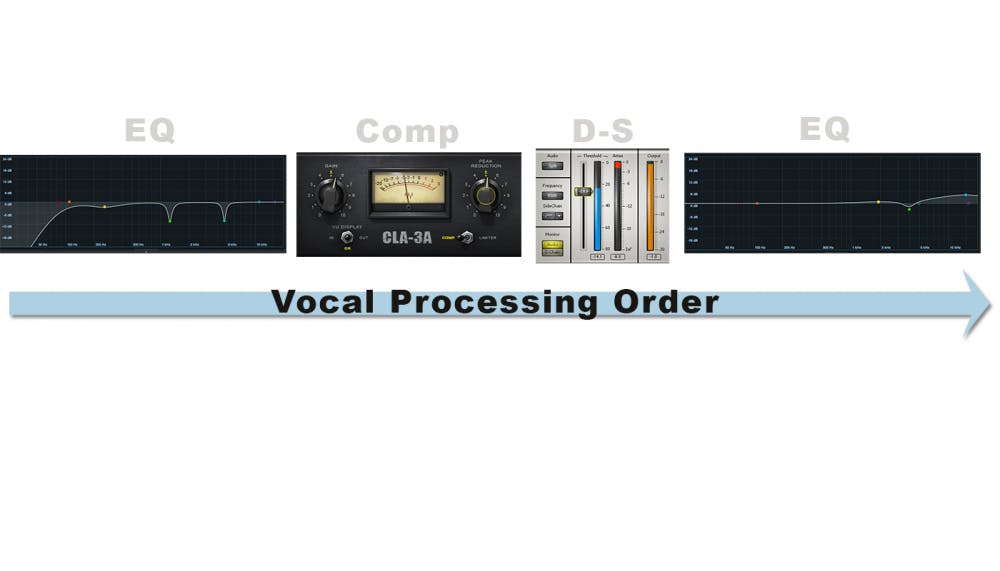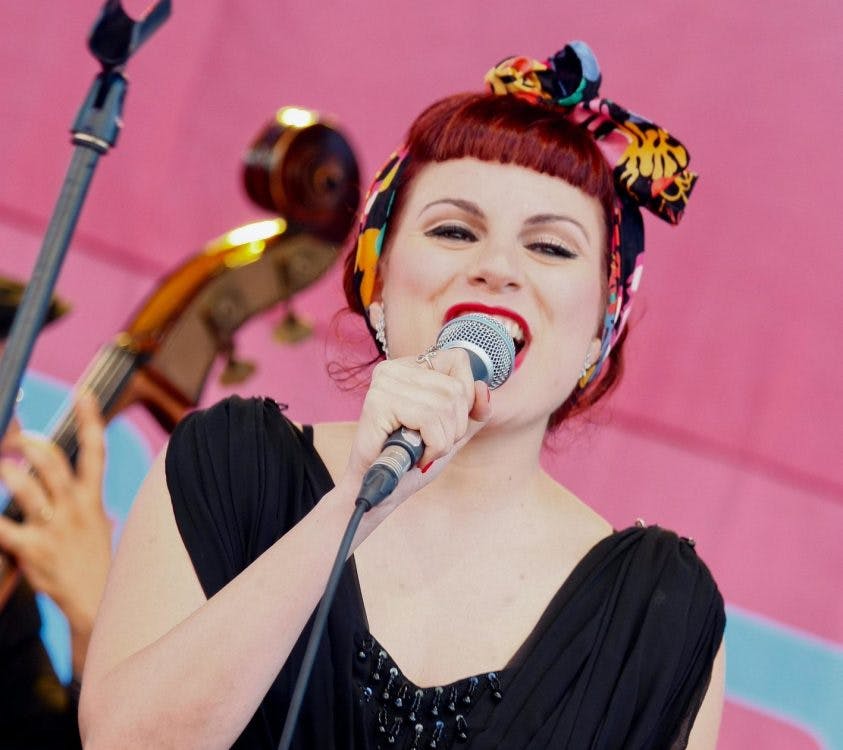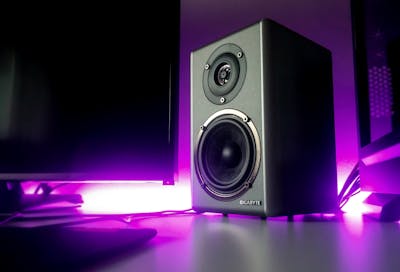Vocals deliver the message of a song and our ears are super-attuned to the tone of the human voice, so dialing in the vocal EQ may be the single most important part of the mixing process. Here are some frequency regions and how to deal with them.

Very Low Frequencies: Human voices don’t produce much musical information below about 100Hz, but rooms, especially large rooms may have a lot of noise down in the subs. Air handling, outside traffic rumbling, bumping a mic stand or even footsteps on a hollow floor can be dialed out with a high-pass filter set to 100Hz with an 18dB/octave slope. This is a great time to try that linear phase EQ to avoid coloring the vocal with phase shift artifacts!
Low Frequencies: 100Hz up to 400Hz. In a busy track, you often need to clear out this range by a few dB, with a wide bandwidth, so that the vocal can sit inside the track without sounding too boomy. In a sparse arrangement, you can often slightly emphasize these frequencies to add size and warmth to a vocal. Singers who move close to the mic often sound boomy on occasional phrases so try a dynamic EQ or multiband compressor to fix only the problem moments.
Low-Midrange: 350 – 900Hz. This is referred to as the boxy range. This range competes with keyboards and rhythm guitars. Sometimes a small vocal booth can have resonances that ring in this region and stacked background vocals can overcrowd this range. Remove frequencies that compete with other instruments or sound boxy with a gentle cut. Narrow bandwidths work well in this region.
Midrange 800Hz – 4kHz: The power of the vocal lives in this range, but so do nasal and harsh frequencies. If you notice a particular peaky frequency, a very narrow notch can tame the harshness. Often 2 or more frequencies can become harsh in this range. A gentle, wide boost in this range can add focus to a vocal in a dense mix.
Upper midrange 4kHz – 8kHz: Sibilance lives here, but so does presence. Narrow notches or dynamic EQs can tame “esses,” but cutting too much here will dull the vocal and reduce the intelligibility. A vocal that sits loud in a mix will display harshness in this range. Try to manually gain-reduce “esses’ and “tees” before applying a de-esser that can dull the entire track.
High Frequencies 8kHz – 16kHz: This range provides the air. For a sizzly pop vocal, try a narrow boost around 11kHz. For a jazzy ballad, you may want to roll off a bit of this range. When you boost in this range, you may need to cut just below the boost to add air without harshness.
Vocal Processing Order
Try a high-pass filter and narrow, corrective EQ cuts before compression and then wide, gentle boosts after compression to enhance a vocal’s clarity and air. If you use a de-esser, try it before or after the compressor, but before the second EQ.





